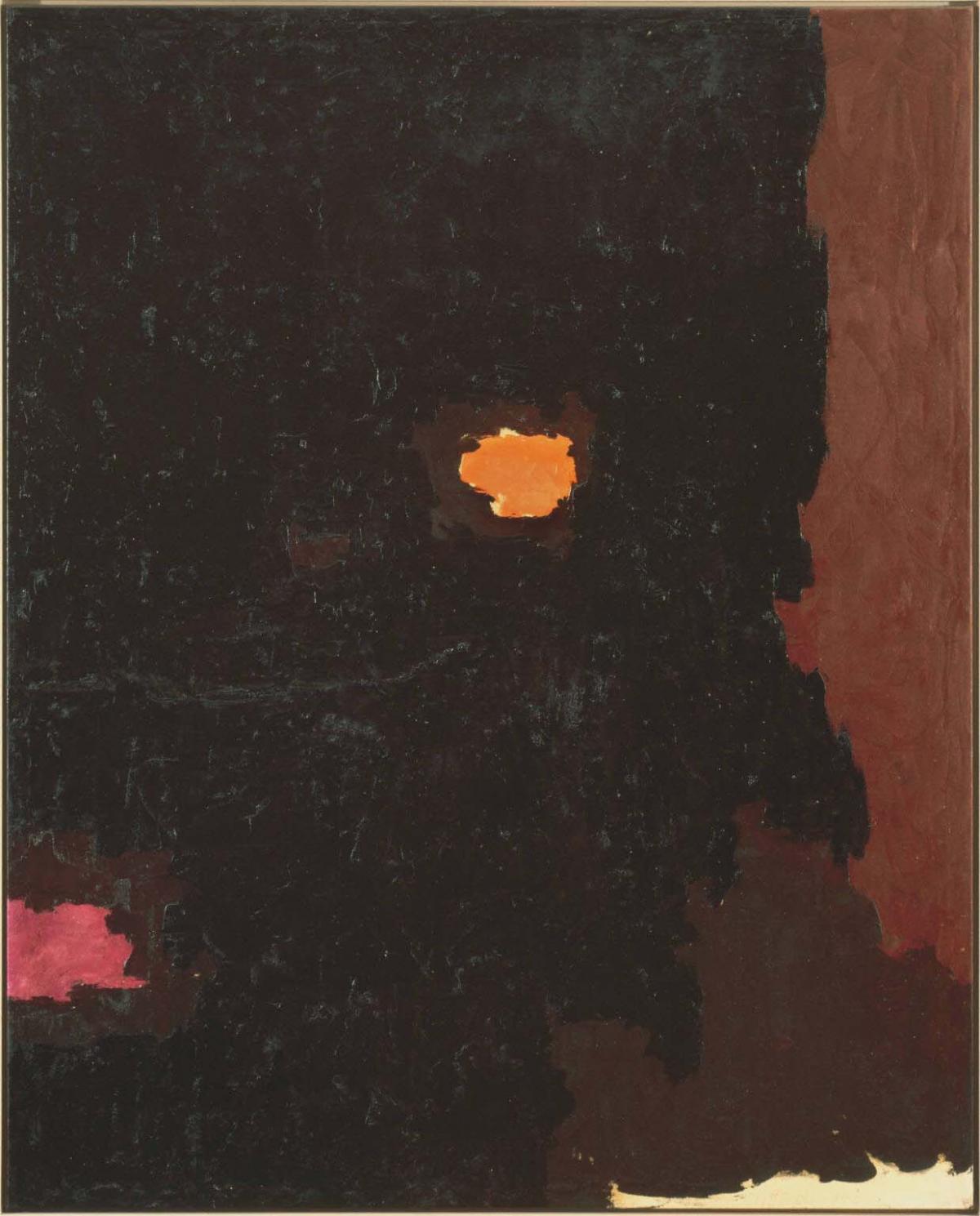1950 B
Clyfford Still ( 1950 )

Like his colleagues Rothko and Newman, Clyfford Still gradually purged his painting of all emblematic imagery or symbolic writing. In his mature work he expressed his philosophical and psychological concerns solely in large, heavily textured fields of color. Still’s 1950-B, with its field of black, painted in thick impasto and punctuated by spots of orange and indigo represents his beliefs about the relation of the individual to the universe and is, as are most of Still’s paintings, a kind of self-portrait.
Still had established his basic themes during the 1940s, when he continued the investigations he had begun as a graduate student in the 1930s. In these early, formative years he first came into contact with primitivism, psychology, anthropology, and mythology—sources that were crucial in the development of abstract expressionism.
The central theme of 1950-B becomes the confrontation of death and life and the need—as Still saw it—for the individual to construct his own definitions and conditions for both. Still wanted his viewers to question their cultural and social contexts in approaching these huge questions and to enlarge their definition of self to include recognition of a collective primitive past that accounted for origins of culture. Carl Jung’s theories of the collective psyche were of fundamental importance to Still, who was fascinated by ideas about the mind, creation, and the collective unconscious. Still was equally influenced by anthropological studies that explored myths and their creation as a way of understanding the relationship between the individual and the universe.
This work, 1950-B, also investigates the theme of an obscured sun, a theme Still explored from mid to late forties. These images can be viewed as evocations of the cycle of death and rebirth with a circular—often orange—form coupled with black and dark-brown shapes. In 1950-B the central intense yellow-orange form is submerged within a black field. While the darkness of the field can be perceived as death, the orange circle signifies birth or renewal. These are themes found in myth. Still considered many of his paintings, such as this one, to be extensions of the myth of Persephone and Demeter, both dealing with ideas of death and renewal.
While living in Pullman, Washington, Still became familiar with Native American symbols and rituals of power, which are also plausible iconographic sources for 1950-B. The totemic force of the black field is fused with muted areas of burnt sienna and earth-brown, which may represent a shaman’s material and spiritual environment. This interpretation is credible because Still saw himself as a visionary, and wished his works to be perceived as vehicles through which one could understand the self.